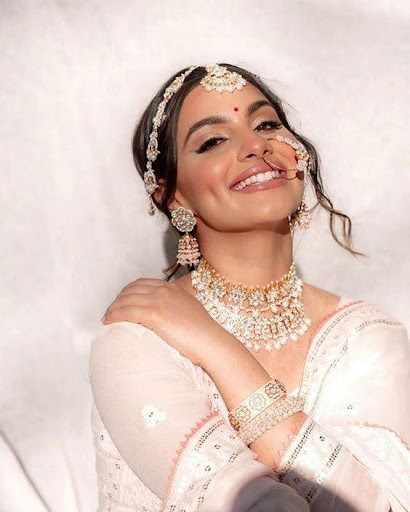Jewellery has long been part of India’s rich cultural legacy. Every culture from the Indus Valley Civilization to contemporary society wears jewellery in some form or another; all are united in this one aspect – jewellery. Each culture has its own style and traditions behind its jewellery designs that contribute to India’s great diversity.
Antique, bridal, beaded and handmade forms of jewellery typically consist of precious metals like gold and silver as well as precious gems such as diamonds. There are popular Indian crafts such as Jadau, Meenakari and Panchchikam from Rajasthan and Gujarat which are very beloved among Indians.
Different Types of Indian Jewellery
Indians wear jewellery in many forms, from rings and pendants to bracelets hand harnesses and waistbands. Some of the commonly seen Indian jewellery types include:
Rani Haar
Rani Haars are heavy and long antique neckpieces worn by brides or special occasion attendees to elevate their appearance as Queenly Brides, as their name suggests. There are various designs such as Jadau models but generally speaking, these types of pieces are made out of gold, silver, platinum and stones such as diamonds.
Bichiya, commonly worn by Indian women, is an ornament made of metals and alloys and worn on any toe; however, most often it is worn on the second toe as this is considered the longest and easiest one for wearing jewellery. Wearing toe-rings as a symbol of marital status is highly practised in Indian society.
Kada/ Kangan
Kadas are metal bangles worn by Indian men and women for both religious and secular purposes; Sikhs typically don kadas during services at places such as Golden Temple. Kangans, on the other hand, are worn only by Indian women as jewellery pieces – generally given by mothers to their daughters-in-law as a sign of growth for their family unit.
Payal (also referred to as an ankle chain or string bracelet) is an anklet typically worn by Indian women as jewellery on special occasions such as weddings. Made up of metals, alloys and stones it serves as the focal point of this accessory piece worn on many different events like this.
Nath
Nath is a nose ring worn by women that comes in various designs and shapes made of metals or non-metals with stones studded onto them. It is an integral part of Indian culture and can be found worn throughout India – it is typically worn on either nostril in southern parts while northerners wear theirs on left nostrils as a symbol of marriage; even having it pierced is seen as an act of respect to Goddess Parvati.
Maang Tikkas
Maang Tikkas are antique jewellery ornaments worn by women as part of their bridal wardrobes. This antique piece has two ends – one for holding hair pins and the other with hanging jewellery that sits between their hairlines – with an array of hairpins in between, giving an antique look. Although traditionally only worn by brides, today any woman can sport Maang Tikkas for fashion statements and special occasions alike.
Matha Patti
A Matha Patti is another form of headgear decoration that complements Maang Tikkas. Worn along the hairline, this headgear accessory magnifies the beauty of brides when worn alongside Maang Tikkas.
Jhumkas
A Jhumka is an iconic Indian earring style worn traditionally by women. These intricate pieces boast both antique and trendy aesthetics and designs which have made it a must-have among women of all ages for generations. Although its name refers to traditional bell-shaped designs of India, over the years new designs have taken hold and the trend remains fashionable today.
Baju Band
An armlet known as an Ananta/Angada or Bajuband can be worn around the upper part of an arm, above the elbows. While traditionally only worn by men, gradually women have begun donning one as well – initially on both arms but in recent times more commonly just one arm. A bajuband also forms part of Solah Shringar (an Islamic dress code), making it an integral piece of jewellery worn during religious worship services.
Kamarband
Kamarband or Kardhani (belly chain), is a form of jewellery worn around the waist. Crafted from gold, silver or pearls to fit every body type and complement outfits from sarees to jeans these chains adorn all types of body types with ethnic looks when worn with ethnic fabrics such as lehengas or jeans. Beaded and Jadau jewellery styles also exist for an added twist; Solah Shringar defines married women in terms of beaded and Jadau jewellery style adornment as part of her signature look!
Haath Phool
Haath Phool has quickly become a fashionable party-wear accessory over time, popularized by Persian Queens and popularised by Mughals alike in India. Also referred to as Haath Kamal or Panja, Haath Phool is an elegant hand bracelet that extends through one or multiple chains connected to it to rings on either end – popularised further in modern India by Mughal rule and worn both bridal wear as well as party-wear attire. Available in various designs and shapes for any purpose from bridal-wear to party-wear purposes!
